The Pyrenees of Lleida are a dream for nature lovers, adventure seekers, and anyone craving fresh mountain air. It’s home to some of Catalonia’s wildest landscapes, which is why, as mountain lovers, it’s one of our absolute favourite regions!
Just a couple of hours north of Barcelona, you’ll find Catalonia’s only national park, centuries-old Romanesque churches, and incredible food (think mountain stews and local cheese), and endless outdoor adventures. Hut-to-hut hikes, e-bike routes, canyoning, skiing, sunset viewpoints… this region has it all.
After many years exploring these mountains, valleys, and villages, here are 10 cherry-picked things to do and see in the Pyrenees of Lleida, with our favourite spots and experiences in this spectacular corner of Catalonia.
Do a hut-to-hut hike
Hut-to-hut hikes are ideal if you want to spend a few days out in the mountains without carrying a heavy backpack, sleeping in simple but cosy places, and taking your time to enjoy the landscape. And the Pyrenees of Lleida are full of them.
We’ve done several over the past years, and these are our favourites:
- Carros de Foc: The only hut-to-hut hike in Catalonia that takes place in a national park, the incredible Aigüestortes. It’s a 55-km circular hike linking nine huts, with a cumulative elevation gain of 9.200 m. We loved the variety of landscapes we saw during the route, from crystal-clear lakes to lush green valleys and rocky peaks.
- La Porta del Cel: This spectacular 63-km route links four huts in the Alt Pirineu Natural Park. It also climbs the highest peak in Catalonia, La Pica d’Estats (3.143 m). We don’t recommend it unless you’re a seasoned hiker, given the long stages and terrain. That said, if you have the expertise, do it! The landscapes are just mind-blowing.
- Cavalls del Vent: If you’re looking for Mediterranean forests and endless green meadows, this 84-km route is a great choice. It connects eight huts in the Cadí-Moixeró Natural Park. We loved watching the sunrise at 2.510 m, eating mountain rice after hiking all day, and marveling at the emblematic Pedraforca mountain.
If you want more info about what to pack for a hut-to-hut hike and what to expect from a mountain hut, check out our “Hut-to-hut hiking in the Pyrenees” guide.
⚠️ IMPORTANT!
The hiking season usually runs from the beginning of July to the end of September (sometimes into mid-October). During the rest of the year, most huts are closed, and the mountains are covered in snow.
- Hiking to Prat d’Aguiló hut (Cavalls del Vent)
Incredible views from the peak of Certascan (Porta del Cel)
Celebrate midsummer the Pyrenean way
During the months of June and July, people in the Pyrenees of Lleida celebrate the arrival of summer by throwing parties where fire is the main character.
Each valley has its own way of doing it, but the most famous are the falles: torchlight descents where locals hike down from the mountains carrying blazing torches made from resinous tree trunks almost two metres long!
When the locals reach the village, they throw the torches onto a huge bonfire. And then, the night continues with traditional dances, music, and plenty of celebration.
Two of the most iconic places to experience this are Isil and Alins (both on the 23rd of June).
In Val d’Aran, the tradition takes a slightly different shape. Their most famous events are the Crema deth Haro (in Les) and Crema deth Taro (in Arties).
It’s similar to the falles, but instead of bringing torches down from the mountains, the villagers light a large tree trunk right in the main square. As it burns, everyone dances, shouts, and drinks hot wine around it.
We joined Crema deth Haro a couple of years ago, and it was incredible!
These midsummer fire festivals are so unique that they’ve been declared Cultural Heritage of Humanity by UNESCO.

Discover the beautiful Val d’Aran on an e-bike
If you’re into MTB or e-bikes, you’ll really enjoy Val d’Aran! This valley, located in the north-westernmost part of Catalonia, is the country’s most isolated region, which means plenty of mountains and wilderness!
There are many bike routes in the region to cater to all levels. Last time, we did a 35-km circular loop to Montgarri, and we absolutely loved it.
Montgarri is an abandoned village, nowadays mostly in ruins except for a beautiful 12th-century sanctuary and a mountain hut.
In the old days, the place was used as a mountain hospital and a shelter for passers-by, as it’s located on the border between France and Spain. But due to the harsh living conditions (heavy snowstorms and isolation), most inhabitants decided to abandon their homes.
Besides Montgarrí, the route also passes by the villages of Bagergue, Baqueira, and Salardú. And you’ll have amazing views of them as you pedal up to the sanctuary.
If you’d like to cycle to the sanctuary but want a shorter route, you can also start in Pla de Beret and do a circular route from there (12 km total).
There are many places where you can rent bikes in Val d’Aran, especially in Vielha. We brought our own bikes when we did the route. But you can rent good ones in Bicius, NoParar, or AranExperience.
👌 Our tip
If you want to find a lot of tranquility, we recommend doing this route in June or October. We did it at the beginning of November and crossed paths with only three people during the route (though we found some snow in Pla de Beret!).
In summer, the sanctuary tends to be pretty crowded, especially at the weekends and in August. And in winter, most of the route is covered in snow.

Try local gastronomy
The Pyrenees of Lleida are a true paradise for foodies! The region’s cuisine is hearty, comforting, and deeply tied to mountain life. Think dishes that warm you up after a day outdoors: slow-cooked stews, cured meats, and artisan cheeses.
Here are some of the most traditional things you can (and should!) try:
🍲 Olla aranesa: This is Val d’Aran’s most iconic dish. It’s a stew made with meats, vegetables, chickpeas, pasta, and sometimes even pilota (a Catalan meatball). It’s the perfect winter warmer after a day on the slopes.
🥓 Txolís: A typical sausage, slightly smoky and full of flavour. You’ll find it grilled, in sandwiches, or served alongside other cured meats.
🧀 Tupí: A strong fermented cheese spread made by mixing cheese with aiguardent (a type of brandy) and letting it age. It has a punchy flavour, and it’s eaten with bread or potatoes.
🥬 Trinxat: A classic Pyrenean comfort food made from cabbage, potatoes, and topped with cansalada (similar to bacon). It sounds simple, but believe us, it’s absolutely delicious!
🌭 Girella: A sausage made with rice and lamb, typical of the Alta Ribagorça and Pallars regions.
🍯 Allioli de codony: If you love allioli, you’ll love this! It’s a fruitier, slightly sweeter version made with quince. Amazing with grilled meats or as a spread.
And to drink, the two Pyrenean classics are cassís and ratafia.
Cassís is a sweet, deep-red liqueur made from blackcurrants, originally from the Val d’Aran. It’s served chilled and is absolutely delicious (it’s actually Marc’s favourite liquor!).
Ratafia is a traditional digestif made from green walnuts, herbs, and spices. You can drink it as a shot or with dessert, and although it’s strong, it’s also delicious.

Go skiing
The Pyrenees of Lleida are home to six ski resorts, from big ones with all the amenities to smaller, cosier ones.
If you’re after a big, varied ski resort with runs for every level, Baqueira Beret is the place. It’s Spain’s largest and most famous ski resort (even the Spanish Royal Family holidays here!). Nestled in the beautiful Val d’Aran, it has great snow from early Dec to late Apr and warmer temperatures than the Alps.
The only downsides are that it can get pretty crowded on weekends and holidays, and it’s the priciest option in the area. But for many, the size and quality of the resort make it worth it.
Another option is Boí-Taüll, a beautiful resort with the highest ski slopes in the Catalan Pyrenees, reaching up to 2,751m. Located in the Vall de Boí, this resort is known for its pristine natural surroundings, and it’s one of our favourites. Moreover, thanks to its northern location, the snow conditions are usually excellent.
If you’re looking for more familiar resorts, great options are:
- Tavascan: The smallest and most budget-friendly ski resort in the Pyrenees of Lleida.
- Port Ainé: It has some of the best ski conditions in the Pyrenees of Lleida.
- Port del Comte: It’s just 2h from Barcelona.
- Espot Esquí: It has a large beginners’ area with gentle slopes and a spacious playground.
We’ve skied in most of them and have written a guide to help you choose the best for you.

Discover Catalonia’s only national park: Aigüestortes
The Aigüestortes i Estany de Sant Maurici National Park is Catalonia’s only national park, and it’s worth spending at least one day exploring such a beautiful spot.
The park offers endless hiking opportunities, from easy half-day hikes to multi-day hikes sleeping in mountain huts. It’s located about four hours northwest of Barcelona, and the park has four main accesses: from Vall de Boí, Vall Fosca, Val d’Aran, or Espot.
⚠️ IMPORTANT!
Swimming in the mountain lakes and rivers is strictly forbidden in the Aigüestortes i Estany de Sant Maurici National Park. Bivouac and camping are also illegal.
Great hiking routes in Aigüestortes National Park
If you only have one day in the park:
- Ruta dels Llacs del Circ de Colomèrs: This classic hike takes you through one of the most spectacular glacial cirques in the park. The route starts at Banhs de Tredós and follows well-marked but rocky mountain trails through forests, rivers, and high-altitude basins. Along the way, you’ll pass seven stunning lakes, including the famous Lac Major de Colomèrs.
- Estany de Sant Maurici and Estany de Ratera: This circular 15-km hike takes you to some of the park’s most iconic spots. First, you visit Estany Sant Maurici, an emblematic alpine lake surrounded by rocky peaks and pine forests. But that’s not it! You then pass through the Ratera waterfall and the Ratera Lake, enjoying incredible views of the area.
- Camí dels Enamorats, Ruta de la Llúdriga and Planell d’Aigüestortes: What we loved the most about this easy 14-km hike is its variety of landscapes. You pass by wooden bridges, alpine lakes like Estany de Llebreta, waterfalls, and breathtaking lookouts. And the best part is that after climbing steadily for a couple of hours, you end up in a totally flat meadow with meandering streams. To explore the area, there is a boardwalk trail that unwinds through the streams and pine forests.
If you just want a short, family-friendly stroll, the walk from Parking Prat Pierró to Estany de Sant Maurici is perfect. It’s a very simple walk of just over an hour.
Another option is getting a 4WD taxi to Planell d’Aigüestortes and doing the 1.5 km boardwalk trail. It’s completely flat and perfect for families, older travellers, and wheelchair users.
If you have more than one day and want to get lost amongst mountains, green valleys, and alpine lakes, please hike Carros de Foc!
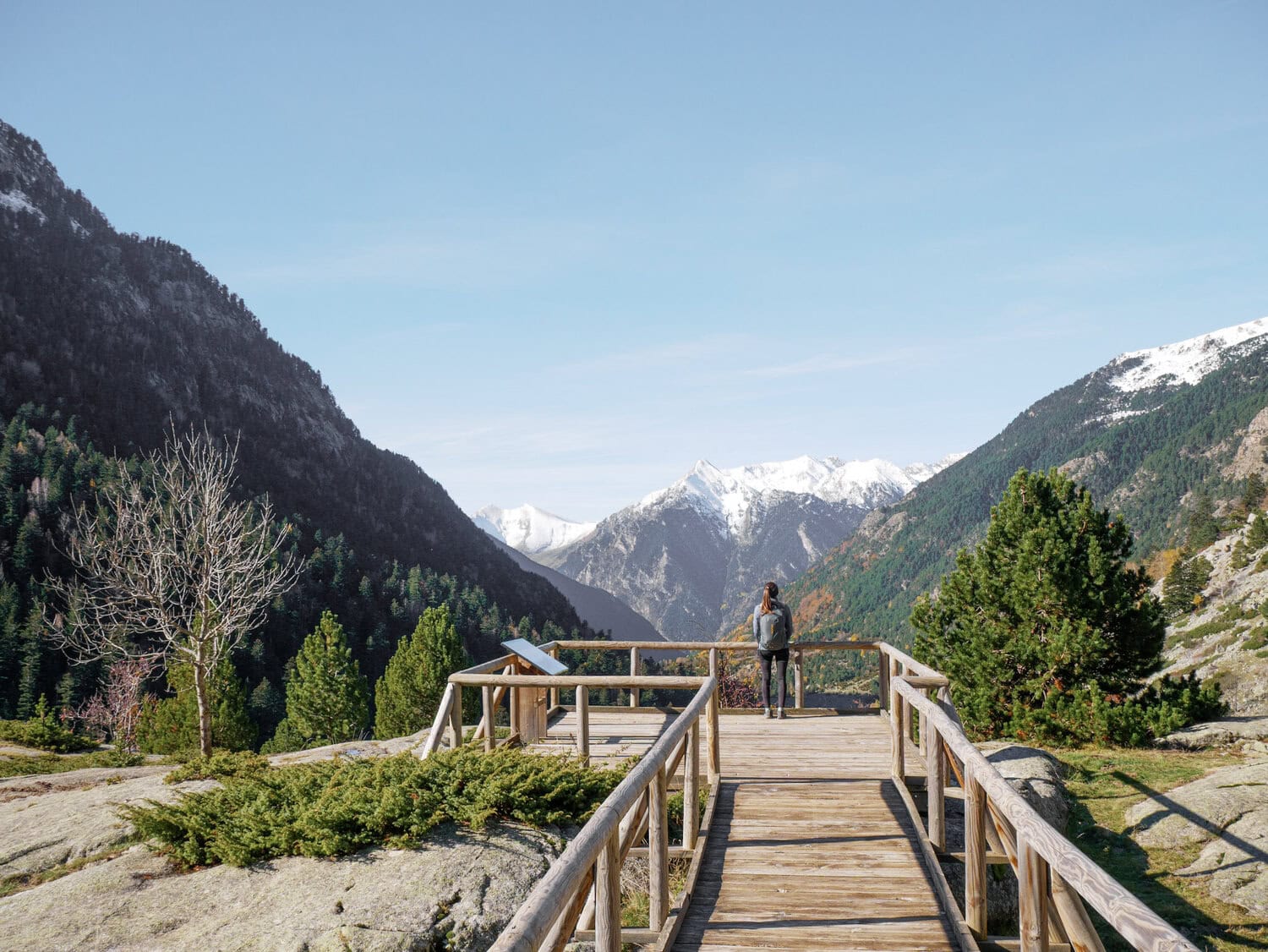
Go canyoning
Besides its natural park, delicious food, and ski resorts, another big highlight of the Pyrenees of Lleida is its incredible canyons.
The area is packed with narrow gorges, natural slides, waterfalls, and bright-blue pools. Basically, it’s a giant natural playground! So if you’re up for an adrenaline rush, add canyoning to your list!
One of our favourite spots to base yourself is Llavorsí, a small village with 350 inhabitants. It’s surrounded by mountains, which makes it the perfect spot for those who love a village’s quietness and the mountain’s adventures in one place, and there are several canyons just a few minutes from the village.
We’ve done the Estaron Canyon twice. It’s an easy canyon with fun slides, exciting jumps, and a 45-metre-high waterfall at the end!
Other great canyons around Llavorsí are the incredible Infern Canyon (intermediate level, with lots of rappels), the Berrós Canyon (perfect for beginners), or the Viu de Llevata Canyon (intermediate level, with a lot of slides and jumps).
We get that jumping into pools or rappelling down waterfalls can feel a bit scary at first, but with a certified guide, you’ll feel completely safe.
👌 Our tip
If you’re staying in Llavorsí, definitely try to squeeze in an extra day for rafting. It’s honestly one of the most fun things we’ve ever done, and Llavorsí is the place for it (it’s the most famous rafting spot in Catalonia).

Discover the Romanesque universe of the Boí Valley
If we’re talking about the Pyrenees of Lleida, we must mention its Romanesque heritage!
In the small (but breathtaking!) valley known as Vall de Boí, you’ll find nine churches and a hermitage which were declared a UNESCO World Heritage Site in 2000.
The churches date from the 11th and 12th centuries, and each has its own charm. You can visit them on your own (the tickets cost between 2 and 5€) or join a guided tour.
We’ve visited the churches in Santa Eulàlia d’Erill la Vall, Sant Climent de Taüll, Santa Maria de Taüll, and Sant Joan de Boí, and loved the careful stonework and their slender bell towers.
We also visited the Centre del Romànic, which we highly recommend. They have a virtual reality experience to learn about the region’s history, and it’s incredible! We won’t tell you much about it because we don’t want to make any spoilers, but it’s very immersive and interactive. Also, it costs only 5€!
If you love hiking, there is a 15-km circular route that links six of the churches and the Centre del Romànic. A great way to spend a day outdoors learning about the culture of the area!
👌 Our tip
Want to try amazing food during your stay in the Boí Valley? Then, head to La Granja, a restaurant in Erill la Vall (the same village where you’ll find the Centre del Romànic and the church of Santa Eulàlia d’Erill la Vall).
The chef (who is also the waiter) is incredibly friendly, the menu is an excellent value, and the dishes are delicious. We loved the blue cheese cheesecake, the lasagne, and the mushroom soup.
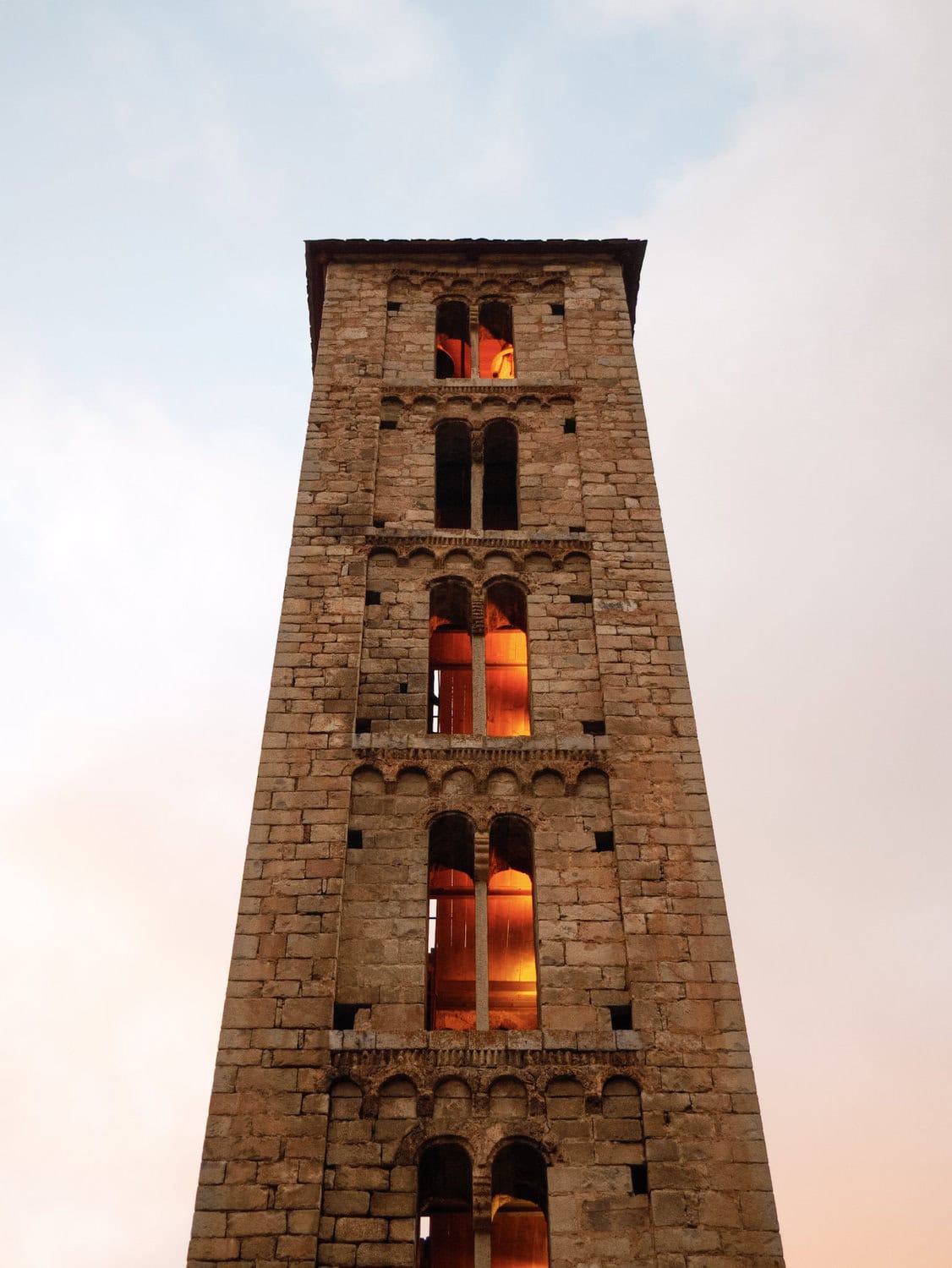
Kayak and hike in a breathtaking valley
Two hours from Barcelona, there’s a gorgeous valley with a bright-turquoise reservoir surrounded by mountains. It’s called Vall de Lord and, if you love hiking, kayaking, or paddleboarding, you’re going to love it!
When we were there, we rented a kayak and spent the whole morning paddling around the Llosa del Cavall reservoir. We took it slow, soaked up the views, and even stopped on the shore for a little break.
Besides kayaking, you can also rent SUP boards or hidropedals. And they even have dog-friendly life jackets so your pet can join the adventure!
To do any of these activities, you’ll need to bring your swimsuit, water shoes, sunscreen (reef-friendly!), sunglasses (with a strap so they don’t fall in!), and a towel. If it’s a cooler day, pack a jersey too.
Besides the aquatic activities, another of our favourites in the area is the hike to the Lord Sanctuary and the Josep Cases lookout. It’s an 8.5-km trail with great panoramic views of the reservoir from different angles.
Prefer something easy? Drive up to Coll del Jou and walk 10 minutes to the Creu de Codó lookout. The views are just as incredible with almost no effort.
- Breathtaking views of the Llosa del Cavall reservoir
- Kayaking in the Llosa del Cavall reservoir
Enjoy impressive views of an emblematic mountain: Cadí
The Serra del Cadí is one of Catalonia’s most iconic mountain ranges. It’s a huge limestone wall that stretches for kilometres and dominates the skyline of the Cerdanya and Alt Urgell regions. It’s the kind of mountain you can spot from far away, and it looks different every hour of the day.
One of the best (and easiest!) ways to enjoy it is by hiking from Estana to Prat del Cadí. It’s a classic route that rewards you with postcard-perfect views. Plus, the trail is straightforward and not too long (about 7 km return with 300 m of elevation gain), so it’s suitable for beginners.
The hike starts in the tiny village of Estana and takes you through forests and open meadows until, suddenly, the whole north face of Cadí appears right in front of you!
We’ve done this hike in both summer and autumn, and we can’t decide which season is best… Each has its own charm! Even in winter, you can do the hike with snowshoes, and we bet it must be beautiful.
🧺 Our tip
Don’t forget to bring a picnic or some delicious snacks! Prat del Cadí is a big, beautiful meadow with the Cadí mountain right in front of you. So it’s a perfect place to enjoy some much-deserved food while soaking up the views.
If hiking isn’t on your plan, no worries. You can still get great views of Cadí from the little village of Arsèguel, where you can enjoy the mountain backdrop without breaking a sweat.
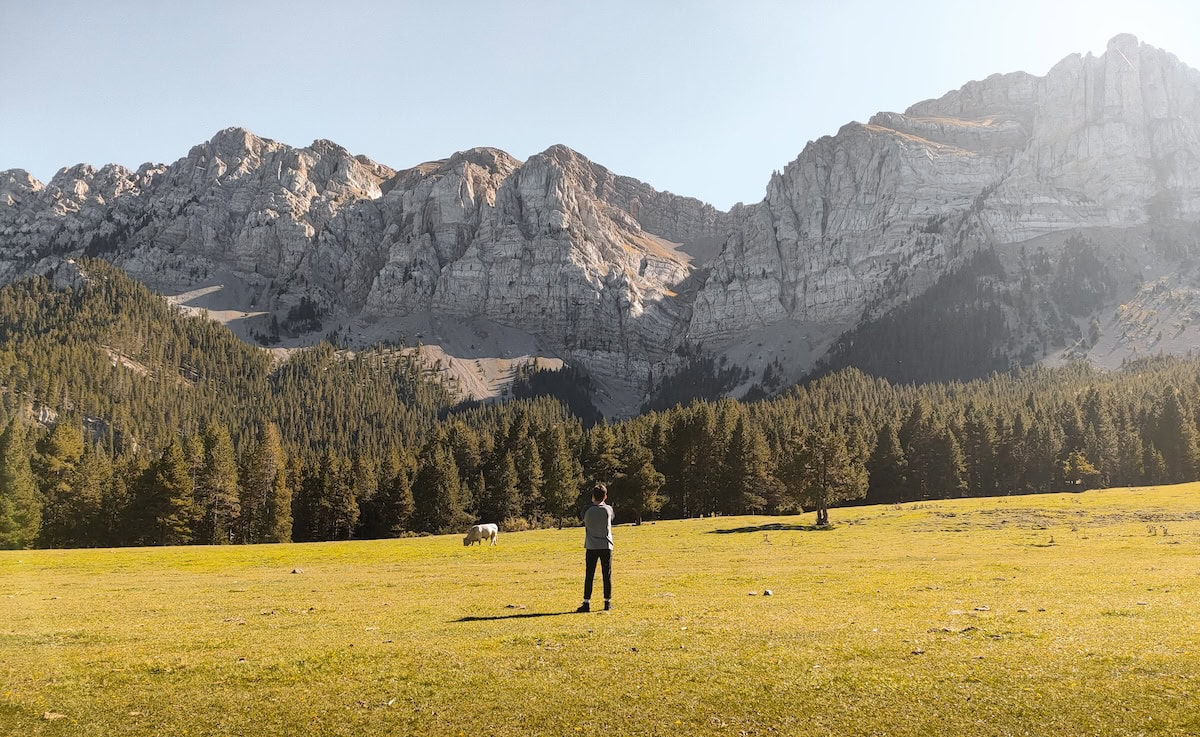
And that’s a wrap! We hope this list of the top 10 things to do and see in the Pyrenees of Lleida has inspired you to plan your next adventure in this beautiful mountain region. Enjoy!

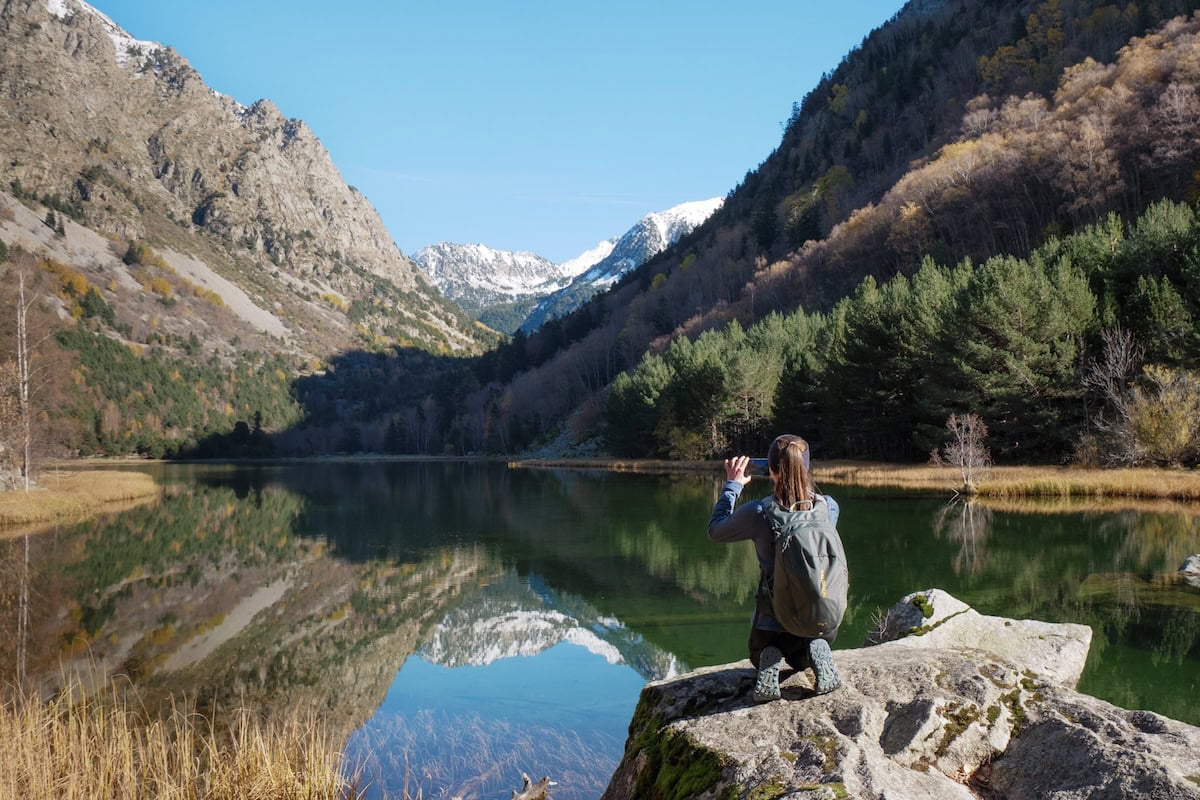
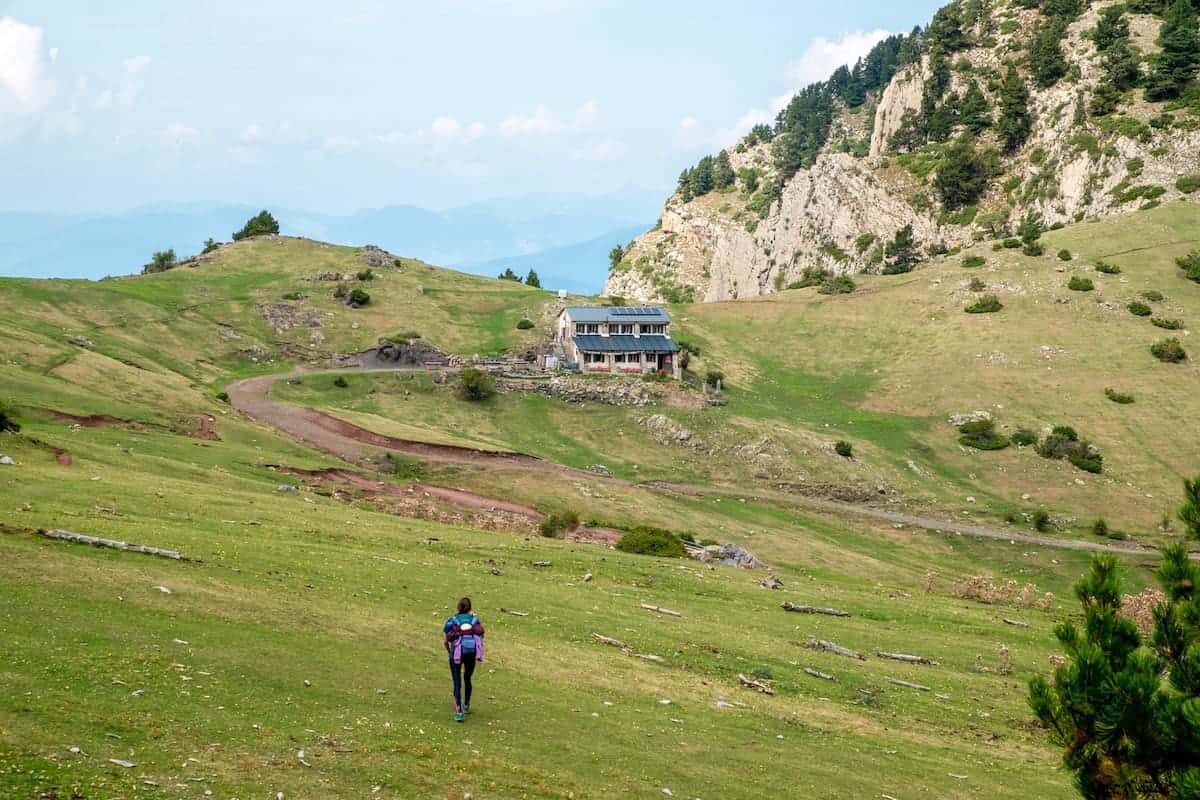

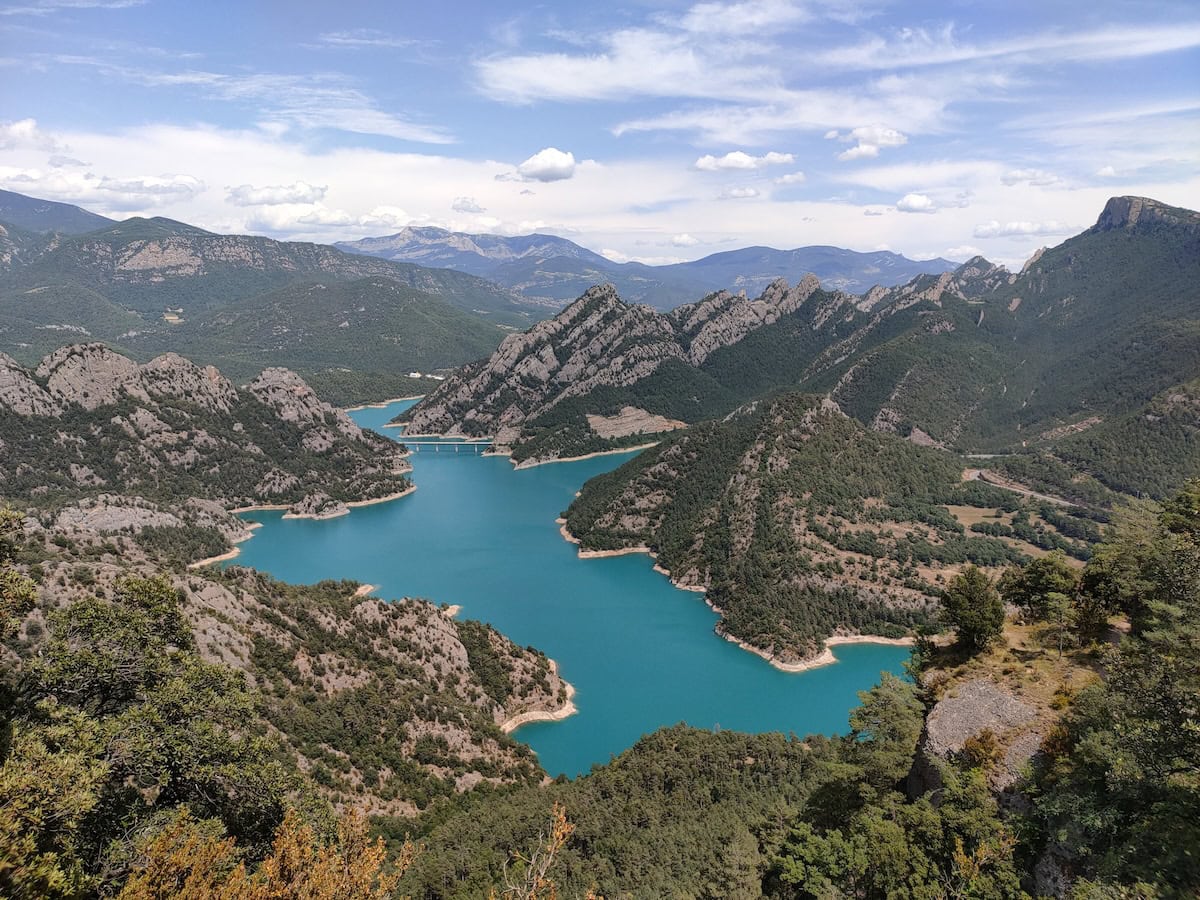

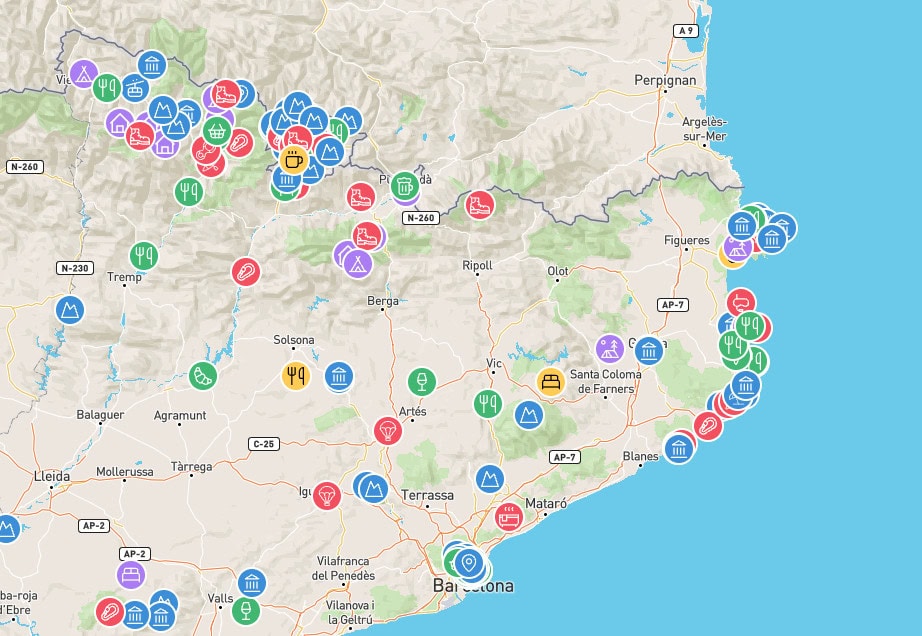

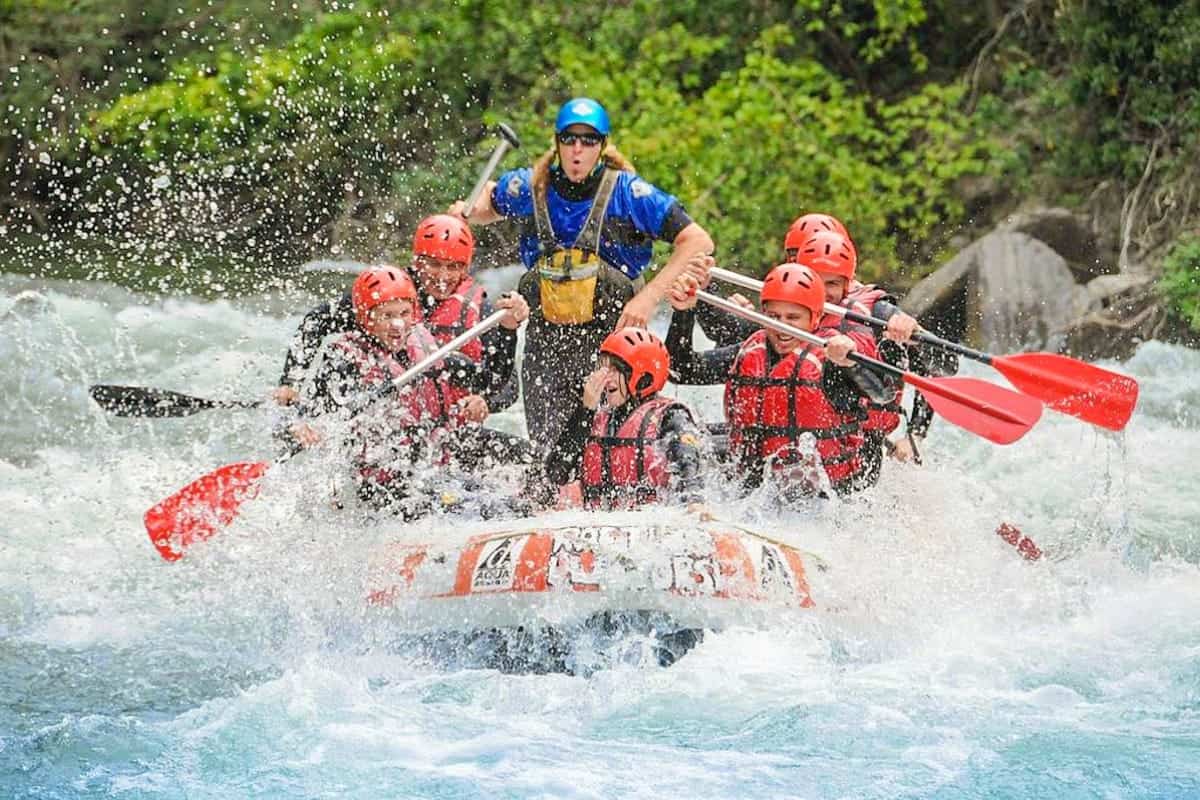
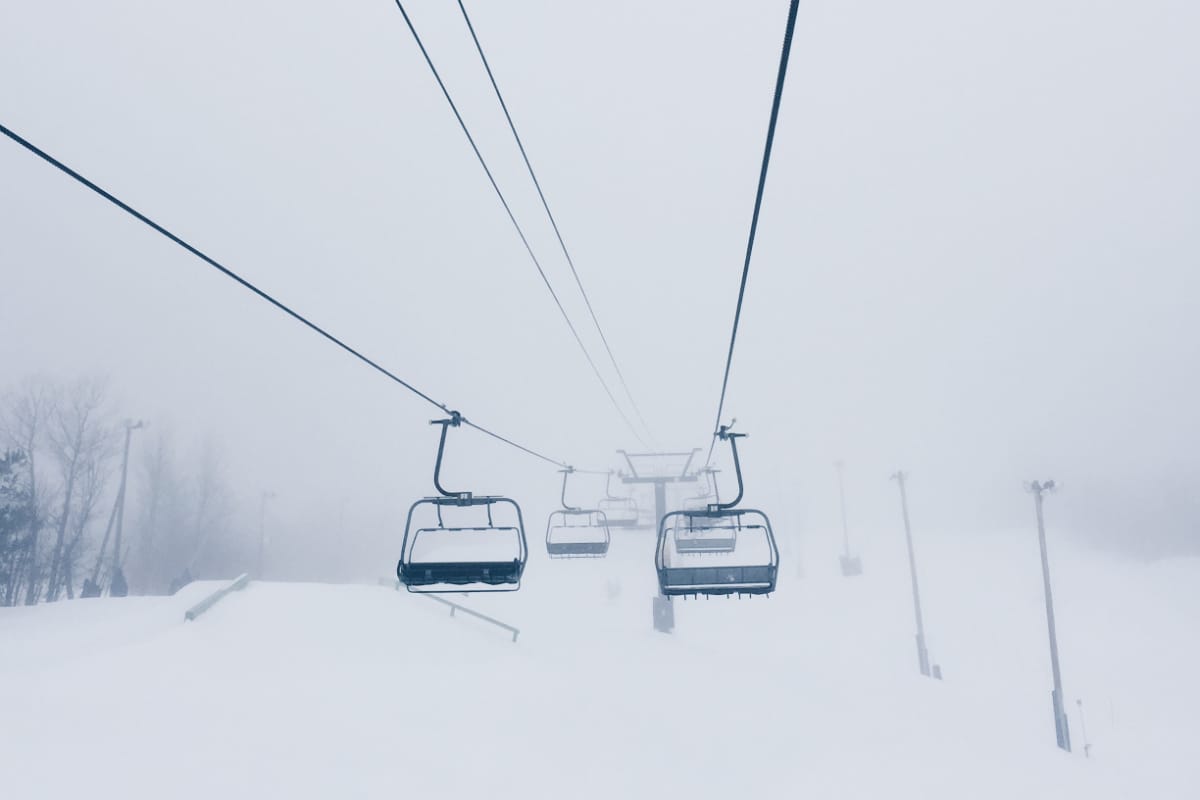
0 Comments